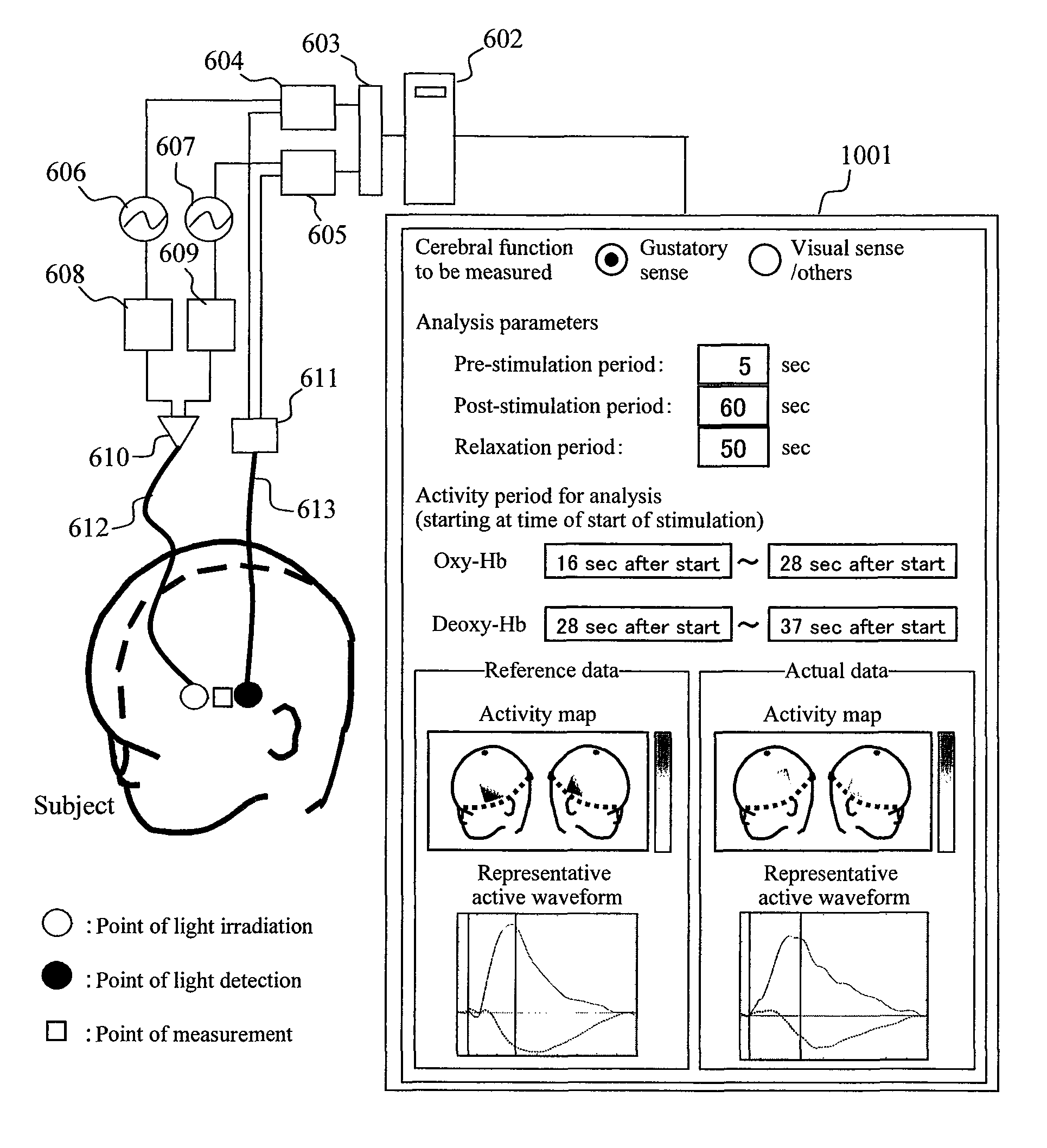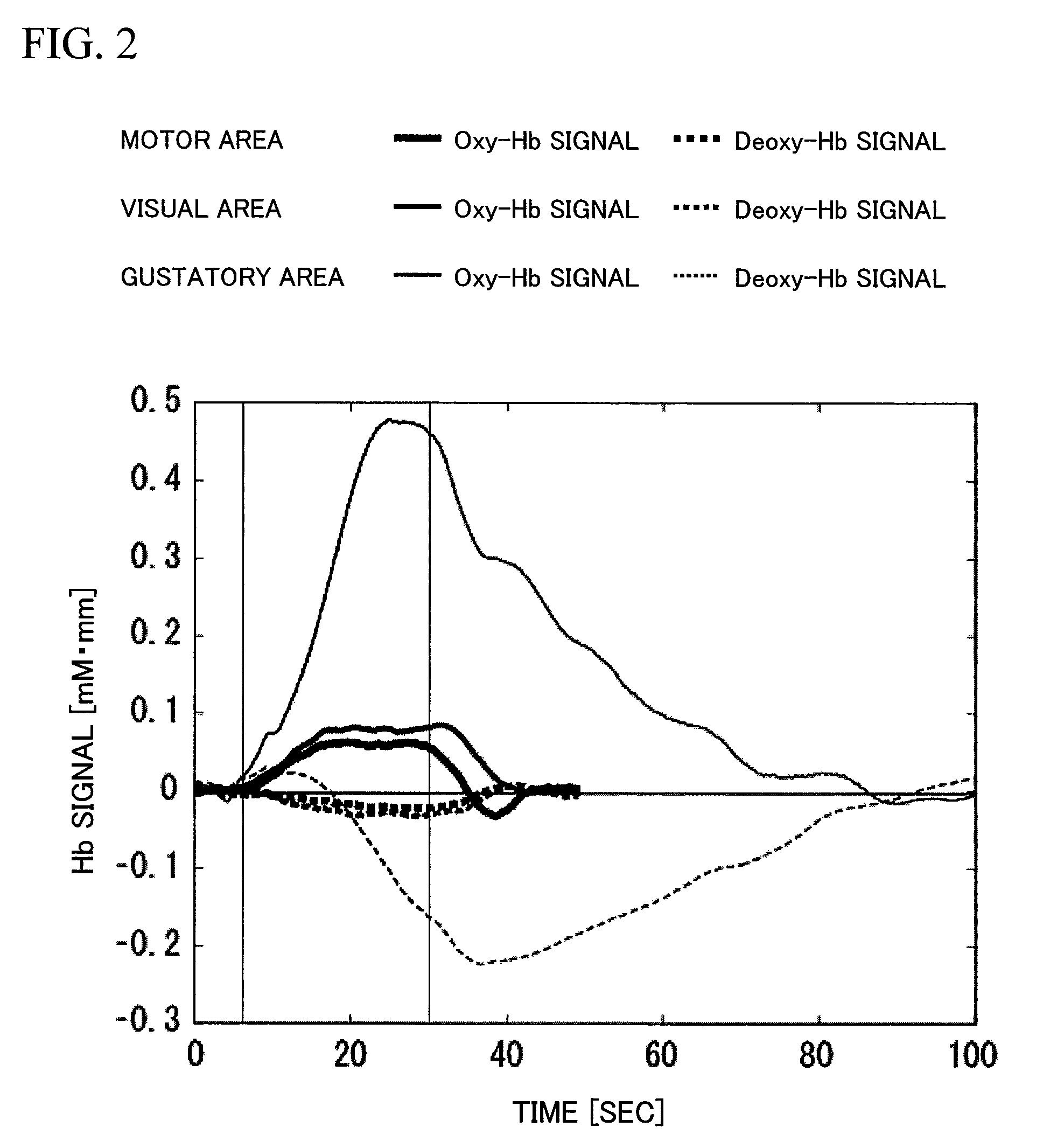Biological optical measurement instrument
a technology of optical measurement and biological fiber, applied in the field of biological fiber optical measurement instruments, can solve the problems of no report on an instance of measurement using this technology, electroencephalography cannot determine whether the result of measurement indicates, and cannot measure the cerebral activity in the gustatory area of the brain, so as to reduce the required number of averaging calculations, the effect of more practical and accurate evaluation of the gustatory function
- Summary
- Abstract
- Description
- Claims
- Application Information
AI Technical Summary
Benefits of technology
Problems solved by technology
Method used
Image
Examples
first embodiment
[0050]A basic embodiment for carrying out the present invention will be described with reference to FIGS. 6, 7, 10 and 12. FIGS. 6, 7, 10 and 12 show a common block diagram showing in schematic form a biological optical measurement instrument according to the present invention.
[0051]An optical biological measurement unit includes a control unit 602 configured of an electronic computer typified by a personal computer or a workstation, two laser diodes 608 and 609 having different peak wavelengths, oscillators 606 and 607 that generate signals for modulating the two laser diodes with different frequencies, a photocoupler 610 that couples together two light beams having the different peak wavelengths, a light irradiation means for irradiating a subject at a point of light irradiation thereon with the light from the photocoupler 610 via an optical fiber 612, a photodetector 611 that detects the coupled light via an optical fiber 613 at a point of light detection spaced appropriately awa...
second embodiment
[0069]The second embodiment provides a gustatory sense measurement instrument using the biological optical measurement instrument according to the first embodiment. FIG. 15 shows an example of a screen on which gustatory sensitivity to “sweetness” is being measured. Display items include the properties of a currently presented sample (e.g., the taste, the concentration, the dose, etc.), the measured activity of the gustatory area (e.g., the active waveforms of the Hb signals, the activity part, etc.), comparison with reference data for evaluation of the gustatory sensitivity, the properties of a sample to be next presented (e.g., the taste, the concentration, the dose, etc.), and a graph showing the gustatory sensitivity of the subject. As shown for example in FIG. 15, the evaluation of the gustatory sensitivity is done according to the difference between the activity of the gustatory area for the current sample and the reference data, in order to accurately measure the gustatory se...
PUM
 Login to View More
Login to View More Abstract
Description
Claims
Application Information
 Login to View More
Login to View More - R&D
- Intellectual Property
- Life Sciences
- Materials
- Tech Scout
- Unparalleled Data Quality
- Higher Quality Content
- 60% Fewer Hallucinations
Browse by: Latest US Patents, China's latest patents, Technical Efficacy Thesaurus, Application Domain, Technology Topic, Popular Technical Reports.
© 2025 PatSnap. All rights reserved.Legal|Privacy policy|Modern Slavery Act Transparency Statement|Sitemap|About US| Contact US: help@patsnap.com



